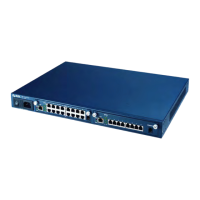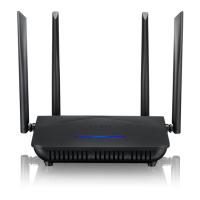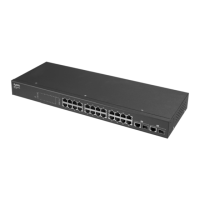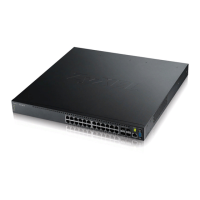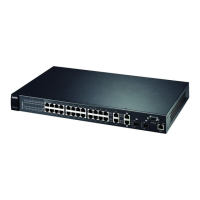IES-1248-51/51A/53 User’s Guide
Chapter 41 Diagnostic 261
41.2 Log Format
The common format of the system logs is: <item no> <time> <process> <type> <log
message>
.
PMM Select a port number from the Port drop-down list box and a power
management mode from the Mode drop-down list box and click Set PMM Mode
to have the specified port use the specified power management mode.
Select L0 to turn off power management on the port.
Select L2 to scale back the power usage to just support the transmission rate
that the subscriber is using.
Select L2 to have the ADSL connection use power saving mode and reduce the
rate when there is no traffic. The rate comes back up when there is traffic.
The ADSL port must be set to ADSL2 or ADSL2+ ADSL operational mode.
Click Get PMM Mode to display which power mode the ADSL port is currently
set to use.
ToneDiag Select a port number from the Port drop-down list box. The ADSL port must be
set to ADSL2 or ADSL2+ ADSL operational mode and have a connection. Click
Get ToneDiag data to display the ADSL port’s tone diagnostics. The tone
diagnostic information displays in the format defined in the ITU-T G.992.3
standard. Use the information to analyze problems with the physical ADSL line.
Note: ToneDiag is faster than the LDM test but displays less
information.
Table 85 Diagnostic (continued)
LABEL DESCRIPTION
Table 86 Log Format
LABEL DESCRIPTION
<item no> This is the index number of the log entry.
<time> This is the time and date when the log was created.
<process> This is the process that created the log.
<type> This identifies what kind of log it is. "INFO" identifies an information log. "WARN"
identifies a warning log.
<log message> This is the log’s detailed information (see Table 87 on page 262).

